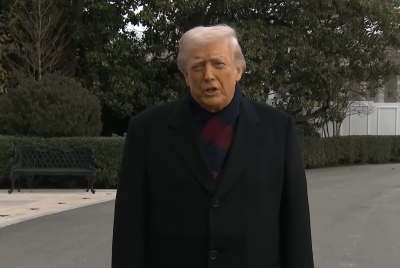George Osborne election budget: Britain 'walking tall again' with 2.5% GDP forecast by OBR

The Office for Budget Responsibility have upgraded its short-term GDP growth forecasts at 2.5% in 2015, reflecting the better international outlook and the boost to real incomes from growth, lower oil prices and a drop in gilt yields.
"Britain is walking tall again," the Chancellor said from the dispatch box, highlighting the fact that the UK has grown faster in 2015 than any other developed country.
The UK is growing 50% faster than Germany, and three times faster than the eurozone, the Chancellor said; GDP per capita is up 5%, he added.
GDP will be a little higher this year and next, but a little lower in 2017.
OBR GDP Forecast
- 2015: 2.5%, up from 2.4% in last December's Autumn Statement
- 2016: 2.3%, up from 2.2%
- 2017: 2.3%, down from 2.4%
- 2018: 2.3%, unchanged
- 2019: 2.4%, up from 2.3%
This anticipated announcement compares to 2.4% predicted in December and 2.1% a year ago.
The OBR also revised down the growth of the world economy, the growth of world trade and growth in the eurozone.
Unemployment forecast down
From the dispatch box, Osborne said unemployment forecast are down to 5.4% this year.
Osborne had been given a considerable boost ahead of his budget speech after official figures revealed on Wednesday that the UK's employment rate climbed to a new record high of 73.3%. The claimant count is at its lowest rate since 1975.
The Office for National Statistics (ONS) said the figure for the three months to January was up from 72.1% for a year earlier.
"1,000 extra jobs have been created every day during this government," Osborne told MPs, pointing that unemployment figures are down 3 percentage points from what the Coalition inherited.
Borrowing
Stronger growth and lower inflation means that public borrowing should fall rather faster than expected, with the OBR predicting debt as a percentage of GDP to fall in 2015-16 for the first time since 2001.
As a percentage of GDP, the deficit will be 5% this fiscal year, then 4%, 2%, and 0.6%.
After that, the OBR predicts a 0.2% surplus in 2018-2019, then 0.3% the year after.
UK's deficit
- It will be 80.4% in 2014-15 and 80.2% in 15-16
- By 2019-20 it will have fallen to 71.6%
Public borrowing
- Revised down from £91.3bn to £90.2bn in the current fiscal year since December
- 2015 and 2016 numbers have been cut from £75.9bn to 73.5bn.
- Figures cut down to £39.4bn and £12.8bn in 2017-2018
- In 2019-2020 there will be a £5.2bn surplus
The Government will increase the number of long-term gilts to be sold, to "lock in" low borrowing rates, the Chancellor announced.
Lower borrowing will be used to address the deficit - but are not for a giveaway, Osborne said, claiming that many historic debts will be paid off.
The Chancellor used his time at the stand to add that the debt created by Gordon Brown "will take longer to pay off".
Weaker outlook for inflation
Inflation forecast was revised down from 1.2% in December to 0.2%, keeping with the Bank of England's symmetric 2% inflation target.
The Chancellor said the OBR had also revised it down for the following three years.
While these revisions are nothing like enough to make any meaningful difference to the medium-term outlook, they might well be sufficient to generate favourable headlines about steady progress the Chancellor has been promising - and should give Osborne one of the better Budget Day hands to play.
IBTimesUK will be reporting on the Budget throughout the day. Make sure to follow @IBTUKPolitics and read our live blog for all your red box related news and commentary.
© Copyright IBTimes 2025. All rights reserved.






















